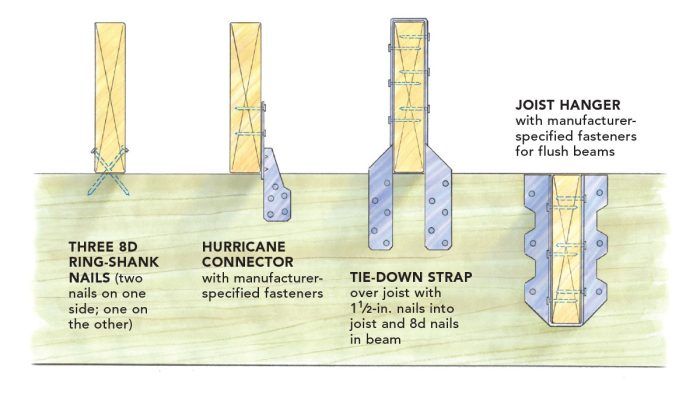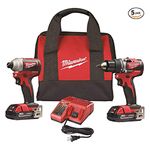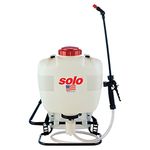Uplift Protection for Decks
Decks must be able to withstand high winds, so choose fasteners that offer the uplift resistance you need for your area.

I’ve been asked several times lately about connecting deck joists to underlying beams. My normal go-to for deck construction, the American Wood Council’s Prescriptive Residential Wood Deck Construction Guide (DCA 6), suggests toenails or hurricane ties for connecting deck joists to beams. Nails are easy and inexpensive compared to hurricane ties, but I usually recommend hurricane ties because I’ve seen how they help rafters and trusses resist uplift during high winds. What do you recommend when it comes to protecting a deck from high winds?
—Mike Guertin; East Greenwich, R.I.
Structural Engineer Loren Ross Answers
Loren Ross, a structural engineer with Altenloh, Brinck & Co., replies: To answer if a structural connection is sufficient, we first have to consider the load. Then we need to determine if the load is less than the connection’s ability to resist it along with a sufficient safety factor. In this case, the load is how much uplift is being applied to the deck with wind rushing over it, which of course depends on the maximum wind speed.
The standard that structural engineers use to calculate uplift does not have an easy or well-defined method for decks. The problem with these calculations is that they neglect the gaps between boards, which reduce the uplift by equalizing the pressure above and below the boards. You can imagine how this reduces uplift by considering an aircraft wing riddled with holes. Using the closest engineering calculations we have and my best guess, the uplift force on a deck is probably around 200 lb. per joist for typical decks in most of the United States.
As far as a joist-to-beam connection that can resist the load, toenails will be the weakest with a design capacity of around 230 lb. when using size 3d to 8d threaded nails as described in DCA 6. Most hurricane ties will have a capacity of more than 500 lb. each, which seems sufficient for even the windiest parts of the U.S. As further evidence, I’d point out that you seldom hear about deck uplift failures, even when deck collapses seem to be regular news.
Furthermore, these values are misleading because decks won’t uplift from individual connections. The deck boards tie all the joists together so that an uplift failure would be a failure of the whole assembly. Also, wood is stronger against short-term loads like wind than it is under longer-term loads like hot tubs and people.
So structurally, you can make a strong case that both toenails and hurricane ties have sufficient uplift resistance for most decks in areas of the U.S. with typical wind speeds. If you live in one of these areas and you want to go to the trouble, a local engineer could likely design a deck with hurricane ties every other or every third joist, depending on the local wind speed.
Most contractors conclude that a hurricane tie on every joist is an easier and less-expensive option. If you want more uplift resistance—if you ’re building in a place with high winds, such as the south of Florida, or for a rooftop deck—I recommend hurricane straps that wrap over the joist. These connect the joist to the beam and reinforce the joist. If you’re wondering how this works, imagine trying to split a log with a metal band around it.
From Fine Homebuilding #324
RELATED STORIES
- A Complete Guide to Building Your Own Deck
- 8 Ways to Make an Old Deck Safe
- Chasing Wind-Load Requirements
Need help?
Get answers you can trust from the experienced pros at FHB. Email your question to [email protected].
Fine Homebuilding Recommended Products
Fine Homebuilding receives a commission for items purchased through links on this site, including Amazon Associates and other affiliate advertising programs.

Drill Driver/Impact Driver

4-Gallon Piston Backpack Sprayer

Cepco BoWrench Decking Tool





























